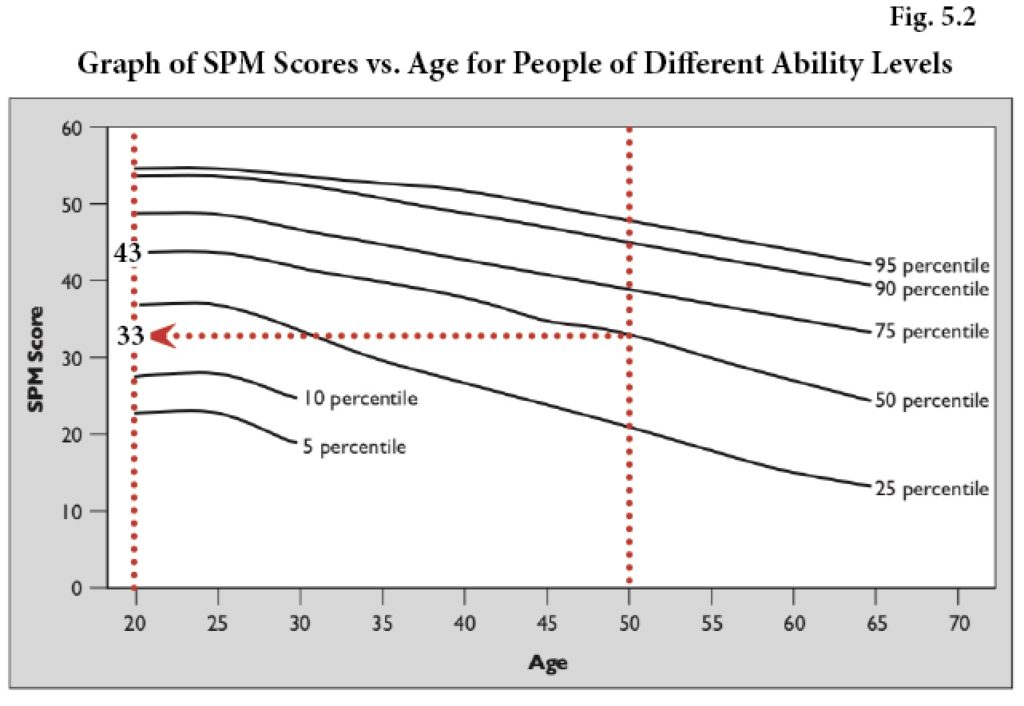Since antiquity, it has been recognized that people tend to decline physically and mentally as they approach middle age. While these changes vary significantly from individual to individual, most of us increase our intellectual productivity throughout early adulthood, reach a peak in middle age, and decline in mental acuity as we move into old age. Quantum physicist Paul Dirac, awarded a Nobel Prize at age 31 for his formulation of relativistic quantum physics 6 years earlier, expressed his fear of aging in his famous quatrain:

Age is, of course, a fever chill
That every physicist must fear.
He’s better dead than living still,
When once he’s past his thirtieth year.
Dirac’s fears were unfounded, because it has become evident that people in different fields such as, mathematics, chess, literature and law do their best work at different stages of middle age. The reason for these differences is rooted in the degree to which fluid intelligence vs. crystallized intelligence comes into play in these different pursuits. (See definitions and discussion at: https://www.intelligence-and-iq.com/is-there-a-point-in-life-age-that-your-intelligence-and-ability-to-learn-will-be-at-its-peak-at-which-point-on-average-will-this-start-to-decline-quickly/. ) Table 5–3 below, based on research by Dean Simonton and shared in the 2022 book, Intelligence, IQ & Perception shows the ages of peak performance in various academic disciplines.
Table 5-3
| Mean Ages in Years at which First, Best, and Last Work are Produced | ||||
| Discipline | Sample Size | First Work | Best Work | Last Work |
| Mathematics | 133 | 27.3 | 38.8 | 53.4 |
| Biology | 176 | 29.4 | 40.5 | 57.8 |
| Physics | 277 | 29.7 | 38.2 | 52.3 |
| Chemistry | 394 | 30.5 | 38.0 | 51.1 |
| Astronomy | 150 | 30.5 | 40.6 | 56.0 |
| Earth Sciences | 89 | 30.9 | 42.5 | 58.2 |
| Technology | 233 | 31.6 | 39.7 | 53.1 |
| Medicine | 271 | 32.3 | 42.1 | 54.5 |
| Other | 102 | 31.4 | 41.6 | 55.2 |
A direct assessment of the trajectory of human intelligence throughout a lifetime came in 1936, when John Raven developed his Raven’s Progressive Matrices tests of intelligence. To norm these tests, i.e., establish baseline data on what scores adults could be expected to achieve as they age, he conducted widespread testing in the United Kingdom, Ireland, and Canada between 1939 and 1947. His graph of the Standard Progressive Matrix (SPM) scores for people of different ability levels between ages 20 and 65 is reproduced in the graph below.

Note: A person who scores at the 95th percentile of a particular age cohort has scored higher than 95% of all the people of that age. To be at the 95th percentile of the 20-year-old age cohort requires an SPM score of 55, while being at the 95th percentile of the 50-year-old age cohort requires only a score of 48.
The 50th percentile line in the graph shows that the average SPM score for 20-year-olds was about 43, while the average SPM score for 50-year-olds was about 33. This shows a substantial loss of cognition between a person of age 20 and a person of age 50, suggesting that intelligence is declining during that period.
Why is it that members of the US Supreme Court are appointed at an average age of 50, rather than 35? The common belief, gained through centuries of observation, is that 50-year-olds tend to be more savvy about life and are more adept at anticipating potential consequences of actions than 20-year-olds. The young typically lack the experience (crystalized intelligence) to make prudent judgments or the knowledge base to formulate solutions to life’s challenging problems. It is evident from Table 5–3 above, that after people reach their intellectual peak, their productivity along with the quality of their work, begins to decrease.
